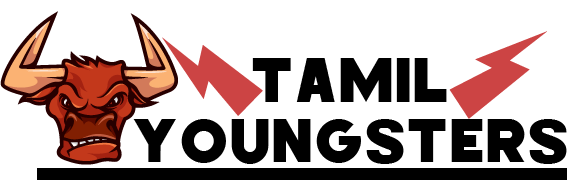12th Biology Study Material Chapter10(Microbes in human welfare) - Tamilyoungsters.
Chapter – 10: Microbes in Human Welfare
Microbes are present everywhere.
E.g.Thermal vents of geyser (Temp. above 1000c)
Deep in soil.
Under snow.
Diverse. Protozoa, Bacteria, Fungi, Virus, Viroids, Prions (Proteinaceous infectious agents)
Useful : Antibiotics.
Harmful: cause diseases.
In Household Products:
Everyday : Lactobacillus (LAB) Lactic acid Bacteria – form curd from milk.
Increase Vit . B12
Check disease causing microbes in our stomach.
Fermentation of dough for dosa, idli (CO2 produced)
Making bread –Baker‘s yeast.Saccharomyces cerevisiae.
Toddy made from sap of palm.
Cheese making (eg.Swiss cheesse by Propionibacterium sharmanii, Roquefort cheese by fungi.)
In Industrial Products :
Beverages and antibiotics.
Fermentors : Large vessels for growing microbes.
Fermented Beverages :
Beverages like wine, bear, whisky, Brandy, Rum (Saccharomyces cerevisiae) Malted cereals and fruit juices used to produce ethanol, wine and beer produced without distillation. Whisky, brandy, rum produced after distillation.
Antibiotics : (Against life)
Penicillin produced by Alexander Fleming from Penicillium notatum while working with Staphylococci Earnest Chain and Howard Plorey awarded Nobel Prize in 1945 for establishing Penicillin as an effective antibiotic.
Uses : Treat diseases like plague, whooping cough, diphtheria, leprosy.
Chemicals: Enymes and other Bioactivities
Molecules:
Uses: Aspergillus niger for production of Citric Acid.
A cetobacter aceti for production of Acetic Acid.
Clostridium butylicum for production of Butynic Acid.
Lactobacillus for production of Lactic acid.
Lipases used in detergents to remove oil strains from Laundry.
Pectinases and Proteases to clarify bottled jucies.
Streptokinase (from Streptococcus) as clot buster in patients with myocardial infraction (heart attack).
Cyclosporin A– an immunosuppresant used in organ transplant patients (produced by Trichoderma polysporum)
Statins produced by yeast Monascu spurpureus used as blood, cholesterol lowering agent.
Microbes in sewage Treatment:
Major component of waste water, human excreta.
Waste water sewage.
Cannot be disposed directly into rivers and streams.
Before disposal sewage treated in sewage treatment plants (STPs)
Treatment done in two stages.
Primary : Physical removal of particles large and small by filtration and sedimentation. Solids – primary sludge.
Supernatant – effluent.
Secondary: Primary effluent taken to large aeration tanks.
Agitated mechanically and air pumped into it.
Aerobic microbes form masses with fungal filaments flocs.
Microbes consume organic matter in effluent for growth.
BOD ( Biological oxygen demand) reduced.
Passed into settling tank.
Bacterial flocs sedimented (activated sludge)
Small part of activated sludge used as inoculums in aeration tank.
Major part pumped into large anaerobic sludge digesters.
Anaerobic bacteria digest bacteria and fungi.
Bacteria produce gases such as menthane, hydrogen sulphide and CO2 – Biogas.
Secondary effluent released into rivers and streams.
No man made technology available till date.
Untreated sewage if released into rivers causes pollution.
Ministry of environment and Forests iniatiated, Ganga Action Plan and Yamuna Action Plan.
Biogas plant:
Concrete tank 10- 15 mts deep, & slurry or dung fed.
Floating cover placed above rises as biogas content rises.
Connecting pipe for supply of biogas.
Used for cooking and lighting.
Development by IARI :- Indian Agriculture Research institute & KVIC:-Khadi and village Industries Commission.
Microbes as BiocontrolAgents :
Insecticides and Pesticides toxic, harmful & are pollutants.
Natural predation better method.
No of pests kept in check, not totally eradicated.
Food chains not disturbed
Eg. Ladybird and Dragon flies useful to get rid of aphids and mosquitoes.
Bacill us huringiensis(Bt) used to control butterfly caterpillar.
Mode of spores operation. Available is sachets, mixed with water and sprayed on plants. oEaten by insect larva
Toxin released in gut kills larvae.
Now Bt toxin genes introduced into plants – resistant to insect pests. e.g. Bt cotton.
Tungus trichoderma now being developed.
Nucleo polyhedrovirus– good for narrow spectrum insecticide applications.
Advantages :-
No negative impacts on plants, mammals, birds, fish or target insects.
For overall IMP (Intergrated pest Management) programme.
For ecologically sensitive areas.
As Biofertilizers:
Chemical fertilizers major pollutant.
Switch to organic farming and use of biofertilizers need of the time.
Main sources of biofertilizers. Bacteria, Fungi & Cyanobacteria. Eg Rhizobium present in roots of leguminious plants fix atmospheric nitrogen into usable organic form.
Azospirillium and Azotobacter – free living bacteria – fix atmospheric Nitrogen.
Symbiotic Associations Eg.Genus Glomus sp. form mycorrhiza
Fungal symbiont absorbs phosphorus from soil and passes it to plant.
Plants show resistance to root – borne pathogens. Tolerance to salinity and drought Increase in growth and development.
Cynobacteria– autotrophic – fix atmospheric nitrogen
Imp.biofertilizer. e.g. Anabaena, Nostoc, Oscillatoria.
Blue green algae – increase fertility by adding organic matter.
No. of biofertilizers are commercially available. Process of sewage treatment in STP a)Primary treatment(physical ) b)Secondary treatment(biological) Effluent loaded in large aeration tank, Agitation & rapid growth of aerobic microbes (flocs) ,Consumes organic matter ,reduces BOD, Effluent passed to settling tank, Flocs sediments form – activated sludge(A.S.),Poured into sludge digester(small amount of A.S. used as inoculum) Filtration & sedimentation.

